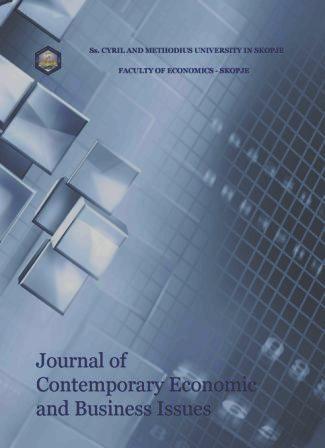NON-PERFORMING LOANS AND PROFITABILITY INDICATORS: THE CASE OF THE REPUBLIC OF MACEDONIA
Keywords:
non-performing loans, banks, credit portfolio, profitability, return on assetsAbstract
In the traditional banking model, loans play a dominant role in banks’ operations. Loan portfolio quality is the main generator of banks’ results. In the periods of best results, as well as in times of worst performance of banks’ operations, the reasons for success or failure have been attributable to the changes in the loan portfolio quality. The basic indicator of credit portfolio quality is the share of non-performing loans to the total credit portfolio. The consequences of an increased amount of non-performing loans may not only reduce the financial results, but also reduce the capital and increase the risk profile of the bank. This paper investigates the influence of the non-performing loans ratio on profitability indicators in the banking system of the Republic of Macedonia for the period 2007- 2015. This analysis presents the correlation and regression between the nonperforming loan ratio of non-financial entities and profitability indicators: rate of return on assets and rate of return on equity, as well as the spread between interest rates on loans and deposits in denars. The results of such correlation show a moderately high negative correlation between the non-performing loans ratio and rates of return on equity and return on assets. Regression analysis shows that increasing the nonperforming loans ratio has influence by reducing bank profitability. Also, the statistical analysis confirms that the profitability position of the real sector is one of the most important factors affecting the movement and level of non-performing loans.
Downloads
Published
Issue
Section
License
Authors retain copyright of the published papers and grant to the publisher the non-exclusive right to publish the article, to be cited as its original publisher in case of reuse, and to distribute it in all forms and media.
Authors are permitted to deposit publisher's version (PDF) of their work in any repository, personal and institutional websites, but full bibliographic information (authors, titles, volume, issue etc.) about the original publication must be provided.

